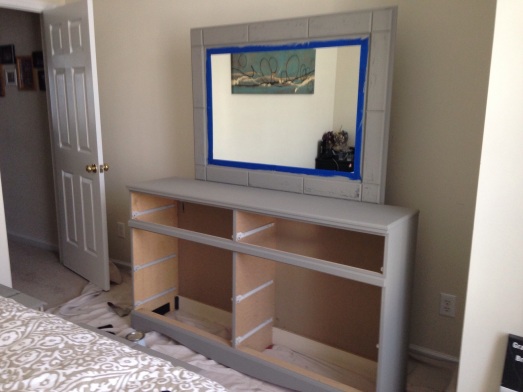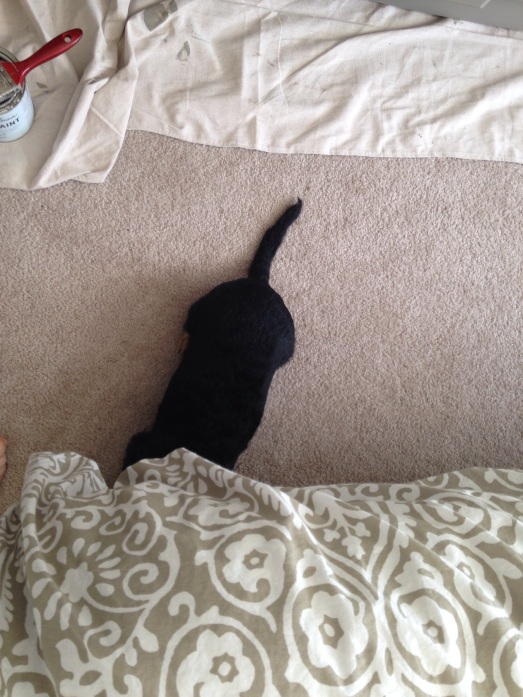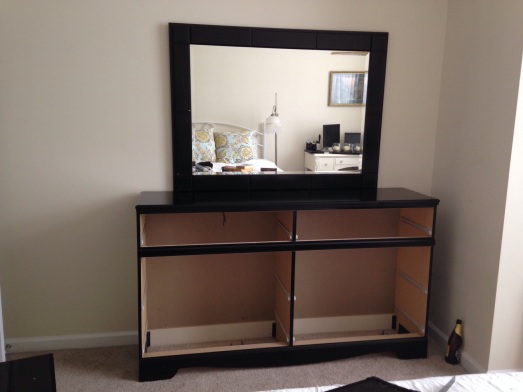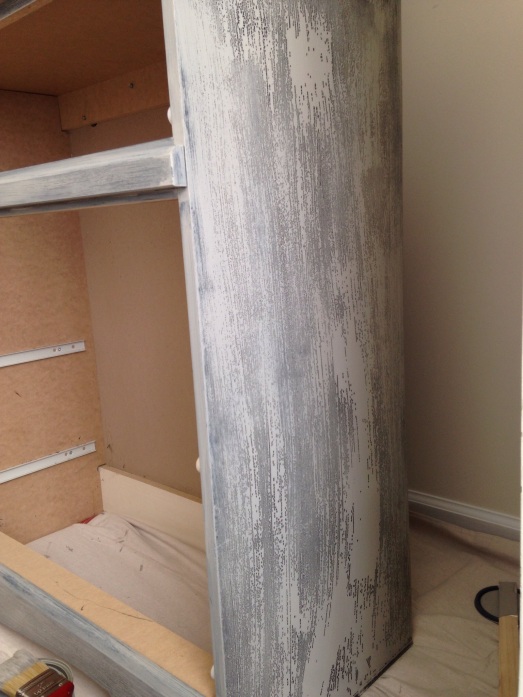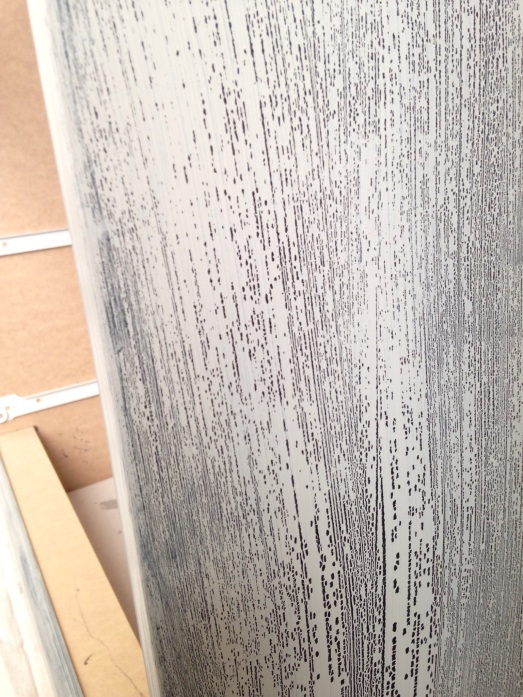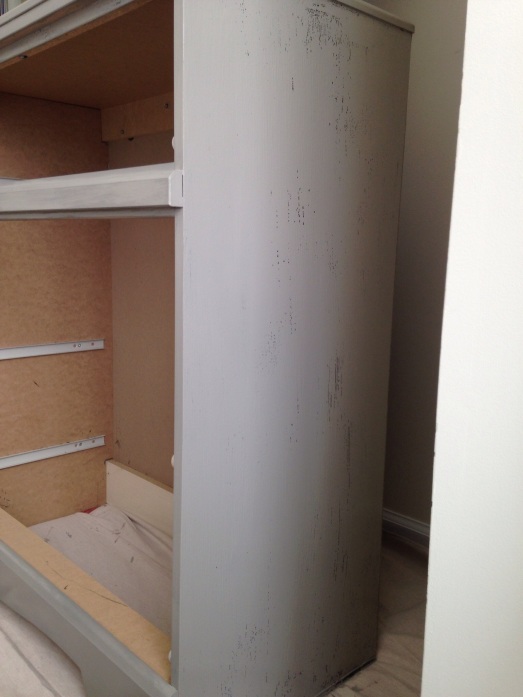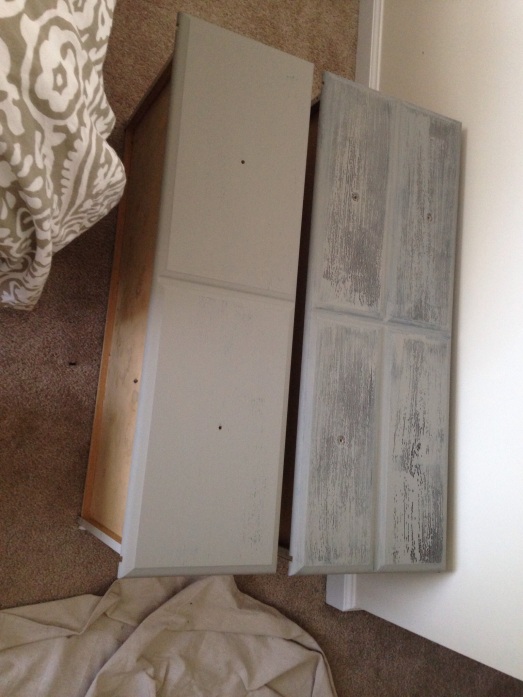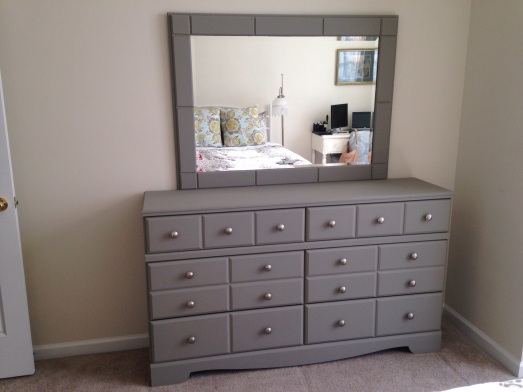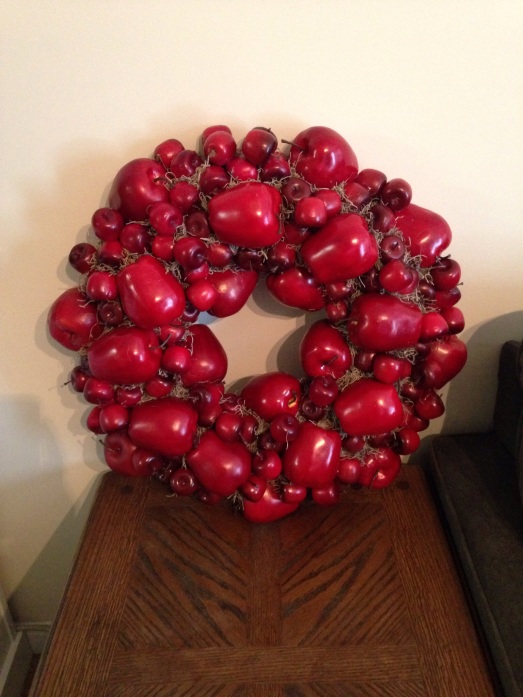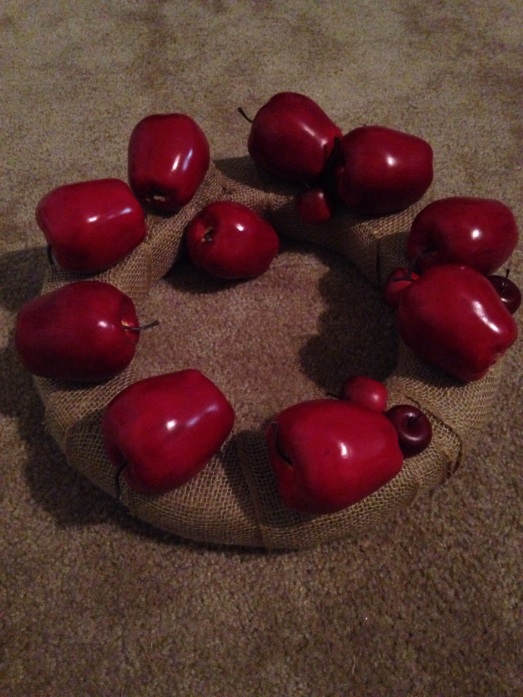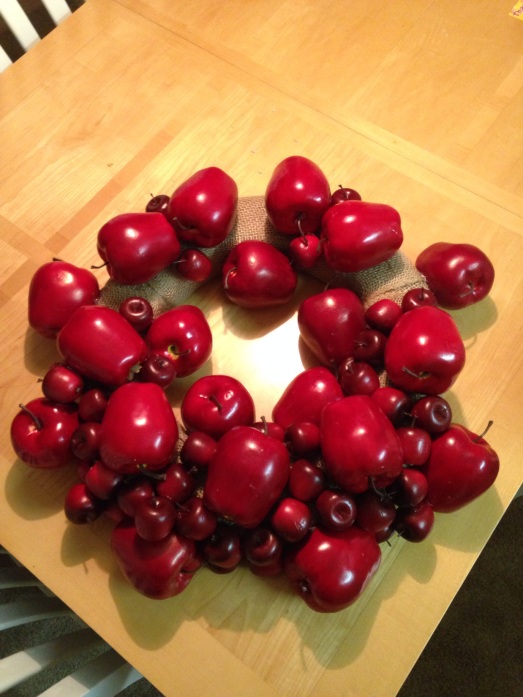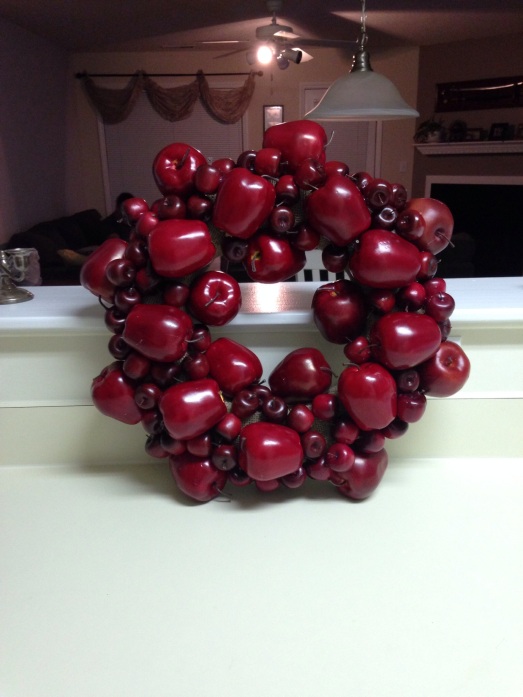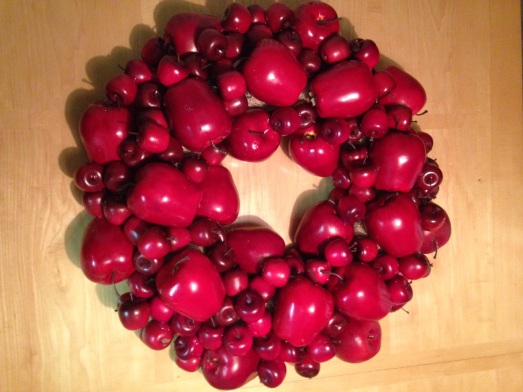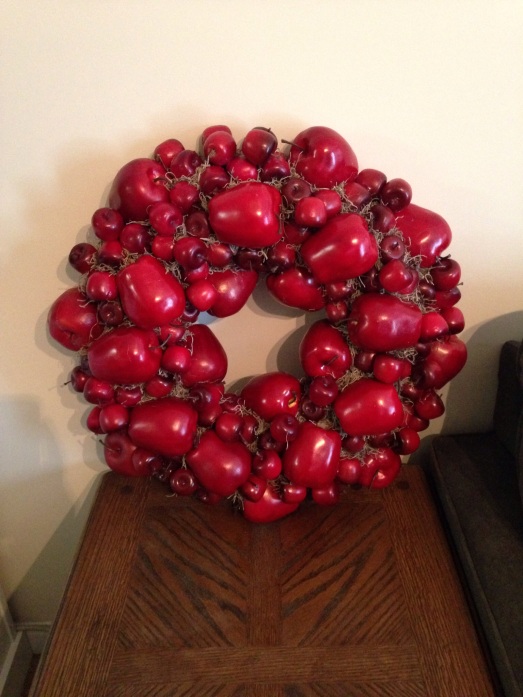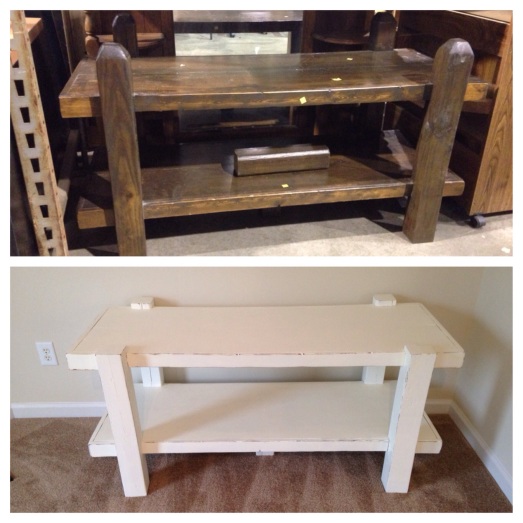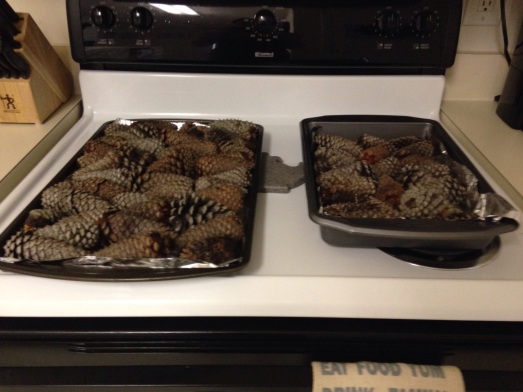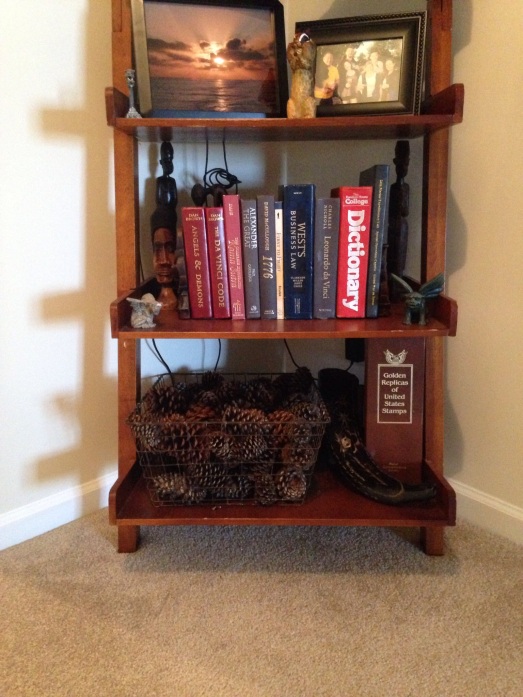I have been on a super strict budget of late, and so I haven’t let myself do any projects since I invariably go over my original budget estimate for my projects. However, I have been dying to build something, and this weekend I had no plans whatsoever and couldn’t resist going through my Pinterest ideas. I saw a little pallet coffee table idea and knew I had to do it.
I brought a super old, super scratched up table from my parents house when I moved out and it has worked well – until I painted everything white. It’s a super lacquered-shiny walnut with lots of scratches. I don’t have much space for a store-bought table – and what fun is that?!

The original table. Too big and the color simply doesn’t match the rest of the downstairs.
I chose not to follow through on my plans to make this coffee table http://thelocker.typepad.com/the_locker/2012/02/diy-industrial-coffee-table.html which I figured was going to be pretty expensive in the end. I was going to stain it and then distress it with a white top coat – oh man would it have looked good! But alas. I went with this idea http://www.pinterest.com/pin/165085142564372398/ instead.
I reclaimed a pallet from my work’s recycle pile (thanks again!) and brought it home. All I would need is to cut it down to size, sand, buy casters, and a glass top. A super easy weekend project with a great result! On Friday night I went over to hang out with my best friend and he showed me all the pallet projects he’s completed in the couple months that we haven’t seen each other, all commissioned by his wonderful girlfriend. She and I are both too obsessed with Pinterest and pallets. I asked him to come take a look at the one I was going to build the table from since it was still in the bed of my truck as it had weird slats and I wanted his ideas on cutting and sizing. When I explained my thoughts he told me he had a tiny leftover piece from one project that I could take. It turned out to be the perfect size!! I was thrilled! That baby came home with me that night.
I liked the idea of having the top slats overhang, but when I laid it out I saw it was just a bit too big. I was also worried about people scratching their legs on it because I clearly don’t have much walking space. That’s the downfall of having big couches and then moving into a new space. It took so long to figure out how to make things flow downstairs with those. Anyways, I digress.

I trimmed the edges down with my jigsaw and then sanded the entire pallet down.

A much better size. Small, but functional.

Then I went to Home Depot and bought 3 inch casters. I saw online they had pre-cut glass but of course not at my local store. They told my Lowe’s does glass cutting, though, so I headed right over there, got my glass, and giddily headed home.
KB NOTE: This is kind of a dumb thing to admit, but I didn’t expect the glass edges to be SO sharp. Make sure you’re 1. prepared for that fact with gloves (I wasn’t) and 2. prepared for sanding the edges down. We’ll get to that step later.
With everything assembled, I stepped back to admire my table and saw just how ridiculously tiny it was. Seriously, I could go into the little people furniture niche. It’s so short.

WHAT IS THIS?! A TABLE FOR ANTS?!
But I told myself not to worry, we’ll just go pick up another pallet and stack them, and voila, a normal size table. Easy solution…or so I thought. I brought home three pallets from the Walmart discard pile (I still don’t know if this was illegal or not. I’m hoping not.) to make sure at least one was going to be right. I measured them all and brought out the table and something was just off. The pallet my friend gave me was definitely not normal. I called him up to see if he had made any modifications to it. Turns out, since he works in HVAC/pipe fitting, a tank for a job came on that pallet so it was not standard size. COOL. So now I have 4 extra pallets that don’t match up and a tiny table. Time to revisit the plans. He suggested I just build legs out of 2x4s but that doesn’t fit my aesthetics for the project! Back to Pinterest.
I couldn’t get the idea of maybe mixing the original pipe table with the pallet so I decided to look at the base for the pipe table again. It really shouldn’t be too hard since it’s just connecting pipes, but I knew I was going run into issues getting custom length pipes. I was also worried about having too many pipes running around and looking bad in contrast to the pallet slats. In the end, and I am so glad I decided to have a long think about the feasibility of the base before going to Home Depot, I decided to go with just the vertical pipes legs, no horizontal pipes or need for anything custom. And thank goodness I didn’t follow their directions! The cost would have been astronomical for my little table. I don’t know if other people have an “in” for where to buy pipes, but they can get expensive at Home Depot. A single flange costs about $10. When I realized I was going to be shelling out at least $80 for the flanges alone, I decided to go with 4 12 inch long, 1/2 inch diameter pipes, 4 flanges, and 4 caps (all 1/2 inch) for the bottom. I also decided to spray paint the legs silver.
I got home, did the trial run, and ugh. Not what I wanted. It looked like it was up on stilts. And something was missing, which I decided was the silver legs. I didn’t want to paint the pallet, but I needed more cohesion. So I decided the legs needed to be white.

Baaaaack to Home Depot. I got everything I needed and came home to do a new trial run.

I am much happier. I ended up going with 8 inch long 3/4 inch diameter pipes, and the corresponding diameter flanges and caps. Then I spray painted the legs – make sure you don’t over spray as it will leave paint drips. I had a weird interaction with a neighbor while I was working on the legs and I think he commented that my style looks like that of a single guy…ok? ANYWAYS. Now I needed to move onto the glass edges.
I called a friend of mine who works in construction to see if he had any tools for glass sanding. He gave me a simple tip. Take coarse sandpaper, wrap it around a paint stirrer stick, and sand. I wore gloves just to be careful. I simply laid the glass on top of the pallet, but I probably should look into how to secure the top. For now, since it’s just me in the house it’s not a problem.

Now the edges aren’t soo sharp!
It took me a day and a half to finish this and cost $75 for all the piping, $5 for the glass, and then the pallet was free. It was WAY more expensive than I expected. If my couch was lower I guess the casters could have worked for a cheaper table, but I am quite happy with the result. But way to go sticking to your budget, Kate….

SUPER HAPPY.
Update: A friend of mine told me that the table looked weird from this angle and if I hadn’t previously told her there was a glass top it wouldn’t make sense. So here’s an additional picture to illustrate!

Mason jar for additional demo
